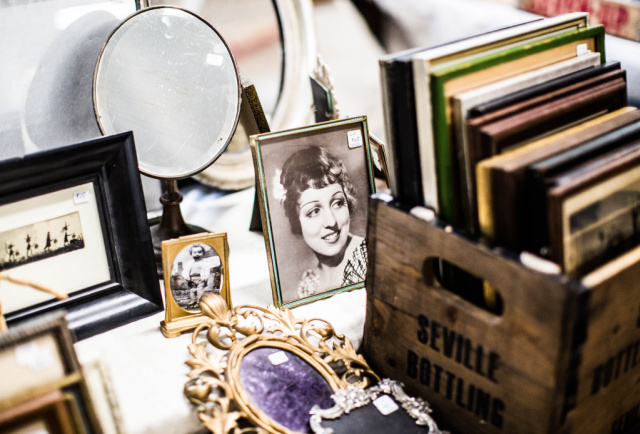While the good old days of sauntering amidst quaint antique stores and art galleries might be on hold for now, the thrill of the hunt has now shifted online. And if done right, antique shopping can be rewarding – by uncovering an elaborate piece of history or acquiring artworks that speak to you. If the antique collector in you is tugging at your sleeve to bring home vintage furniture and rare collectibles, follow our lead.
Here is a list of points to consider while going antique hunting online:
1. Research well

The internet is a treasure trove of limitless information. It should not be difficult for you as an amateur antique/ art collector to access sources for researching and comparing prospective collectibles before finally hitting the Buy Now button. But before you do that, make sure you look at similar items offered by other sites and compare them. Prices from previous auctions are often released for viewing online. If you are on the lookout for rare and obscure collectibles, consider checking out smaller auction houses.
2. Check the provenance

Provenance related information on the world wide web is rather minimal. And in order to safeguard collectors from purchasing inauthentic cultural objects online; UNESCO, INTERPOL, and ICOM issued a joint statement in 2006 regarding provenance on any website offering antiquities for sale:
“With regard to cultural objects proposed for sale, and before buying them, buyers are advised to: i) check and request a verification of the licit provenance of the object, including documents providing evidence of legal export (and possibly import) of the object likely to have been imported; ii) request evidence of the seller’s legal title. In case of doubt, check primarily with the national authorities of the country of origin and INTERPOL, and possibly with UNESCO.” [1]
This recommendation was formulated with the aim of alerting prospective buyers about what classified as a genuine object leading to a legitimate purchase. It is no secret that provenance adds value to any antique. But do keep in mind that unprovenanced objects have a much lower value and are not sold or acquired by trusted auctioneers and dealers.
3. Watch out for fakes
The online world is infamous for being pervaded with illicit/ forged antiquities. With the absence of foundational evidence of an authentic and verifiable provenance, a documented record of the object’s place of origin to the time of its sale; it is quite easy to pass off a fake collectible as genuine. This is why it is important for potential collectors to pay attention to the authenticity of the material they are acquiring along with its provenance. It is hence advised to approach internet dealers/ auction houses that provide a certain kind of guarantee of the authenticity of relics and protection against fraud.
4. Acquire from established and reliable sources
It is no surprise that the internet market invites antiquity collectors, sellers, and dealers from various socio-economic backgrounds. It almost gives competition to and works against traditional physical galleries set up at expensive locations such as London and New York. Moreover, it transcends time and geography and connects potential buyers to dealers/auction houses online. Now, most antiquities on the internet are sold without any valid documentation, traced provenance, or documented history. This is why it is recommended to a) acquire antiquities from established and well-known auction houses or dealers who are active members of professional associations, and b) acquire from dealers who offer a definite guarantee of authenticity for sold objects. It is also advisable to consider auction houses or online dealers who carry out thorough investigations of the legitimacy and authenticity of objects offered for sale.
5. Embrace the process of antiquing

The process of acquiring antiques, art, and collectibles is as elaborate online as it is offline. It requires time, patience, and deliberation. Make sure you only purchase items listed with accurate descriptions and clear photographs. You may want to view the piece from specific angles or get more information to visualize the item in your room. This is why you must remember to look for the item’s dimensions in the description. This gives you a better idea of the scale of the piece.
4. Pay attention to the item’s condition

Attention to detail is a must when it comes to art and antique shopping. Make sure you ask for a condition report with necessary information regarding any damage, restoration, and repairs. Pay attention to detail and look for the item’s circa age, period style, timber, and provenance if possible. This enables you to confirm the piece’s authenticity and also ensures that the piece of your interest is not a replica. This also reveals if the item has been restored to a higher standard. If you wish to age an antique, make sure you pay attention to the color and condition of the wood. Wood tends to darken and shrink with age. Because wood shrinks with time, antiquated furniture may appear misshapen. A tabletop that was once round, ends up looking a bit oval with great age. Another indicator of age would be wooden pegs jutting out from the surface of a cabinet side or a chair leg. Now, various cutting and sanding tools leave behind clues to the era in which an antique piece of furniture was made. Straight, irregular saw marks reveal pre-1830 hand-cut wood. While circular cuts belong to the 1850s. Hence, studying how wood ages over time doesn't just reveal the antique's authenticity but also its age.
5.Enquire
You may be buying a rare book, artwork, or antique piece – it is essential to ask for product specific information before you hit the Buy Now button. If you are looking at a rare book, you must insist on photographs of its pages since some of them might have withered or wrinkled with age. The key to buying antiques and art online is to ask sellers/dealers as many questions as possible. This will help you make an informed choice.
The internet market for antiquities is vast, highly diverse, and rather risky. And while this sounds like bad news, we also know that the one dependable constant of the Internet market is that it is constantly creating or evolving with new commercial opportunities. Moreover, the world wide web is also open to monitoring and investigation. Hence, we conclude by advising all the tech-savvy antique collectors out there to be alert and responsible online buyers.
References
[1] Brodie, N. (2015). 2015 The Internet market in antiquities. France Desmarais (Ed.), Countering Illicit Traffic in Cultural Goods. Paris: ICOM, 11–20. (Academia)
[2] Brodie, N. (2017). 2017 Virtually gone! The Internet market in antiquities. Proceedings of the 6th International Conference of Experts on the Return of Cultural Property. Seoul: Overseas Korean Cultural Heritage Foundation, 190–204. (Academia)
[3] Brodie, N. (2019). 2019 The 'Art World' of the Auction Houses: The Role of Professional Experts. The Role of Professional Experts. Arts 8(2), 56. (Academia)